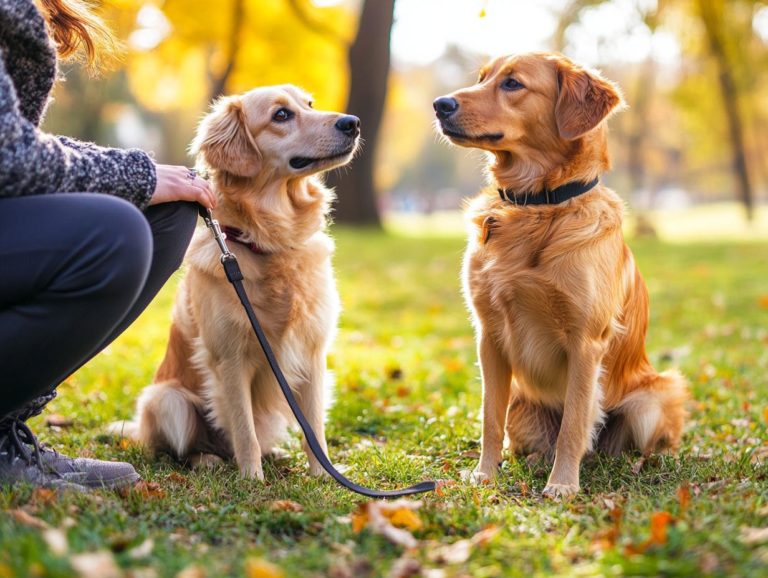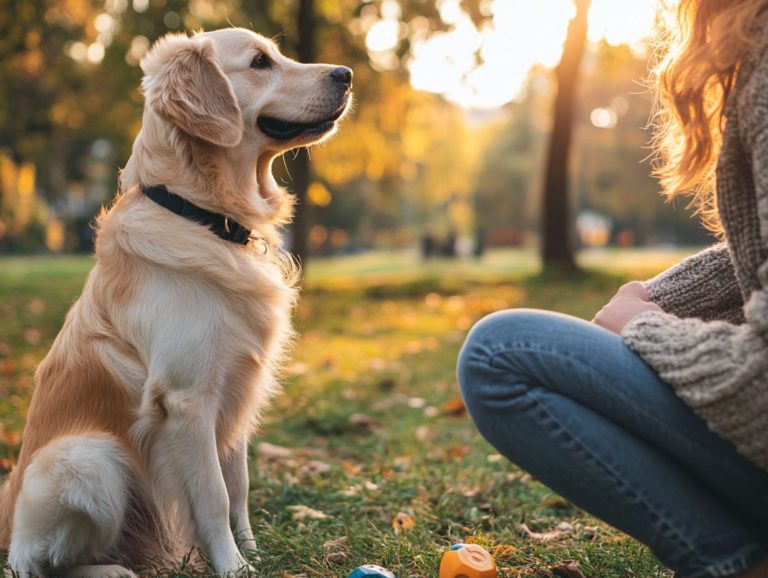Effective Communication Techniques in Pet Training
Effective communication is the backbone of your pet training journey. Knowing how to express your intentions both verbally and non-verbally can strengthen your bond with your furry companion.
This article explores various communication techniques, from positive reinforcement and effective discipline to understanding body language and tone of voice.
Whether you re teaching commands, tricks, or house rules, mastering these skills will enhance your training experience and lead to a happier, well-behaved pet.
Contents
- Key Takeaways:
- The Importance of Communication in Pet Training
- Types of Communication in Pet Training
- Positive Reinforcement Techniques
- Correcting Negative Behavior
- Body Language and Tone of Voice
- Communication Tips for Specific Training Goals
- Maintaining Good Communication with Your Pet
- Frequently Asked Questions
- What are effective communication techniques in pet training?
- Why is effective communication important in pet training?
- What are some examples of effective communication techniques in pet training?
- How can I improve my communication with my pet during training?
- What are some common mistakes to avoid when communicating with my pet during training?
- Can effective communication techniques be used for all types of pets?
Key Takeaways:
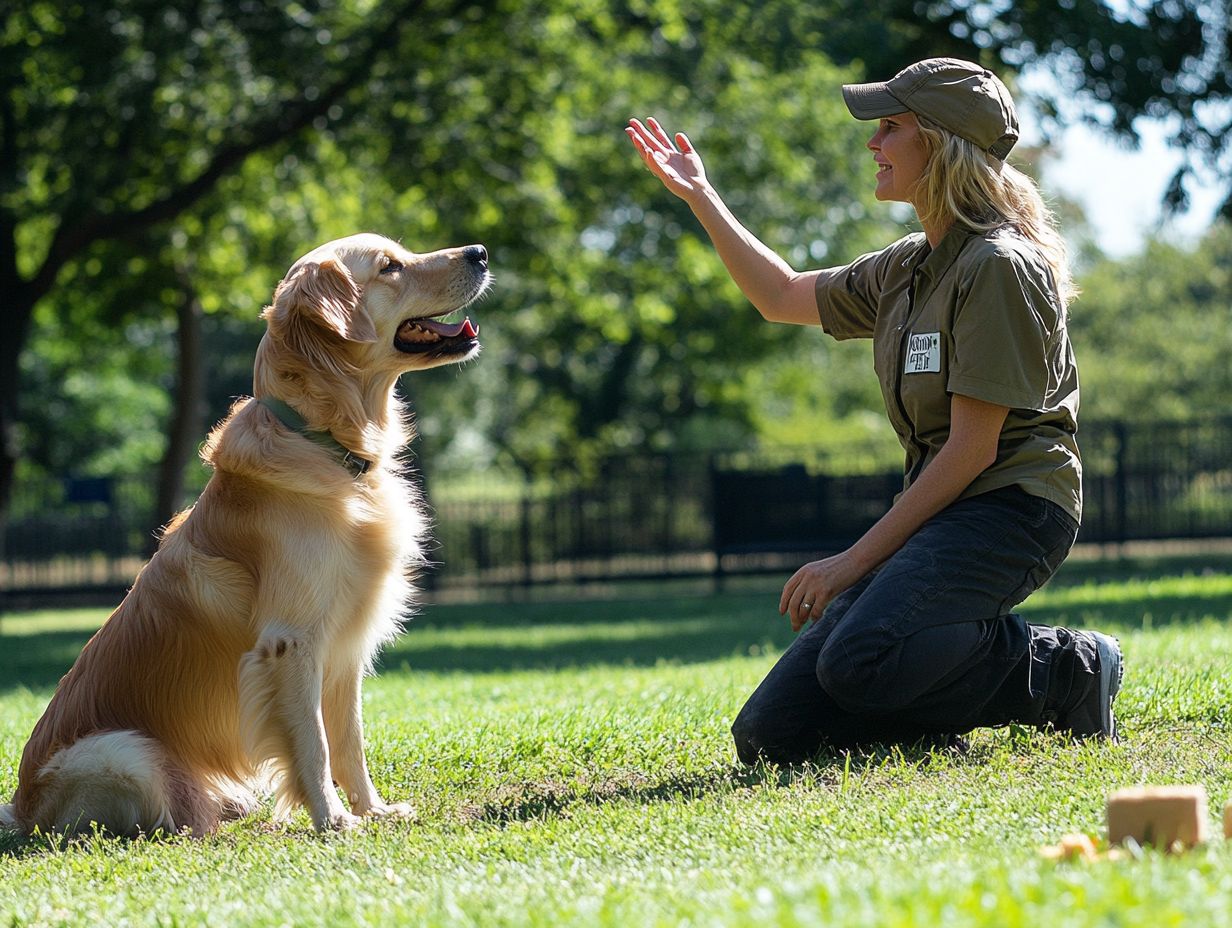
- The key to successful pet training is effective communication, which involves both verbal and non-verbal cues.
- Positive reinforcement, like rewards and praise, is a powerful technique that encourages desired behavior.
- Good communication with your pet requires consistency and an understanding of their body language and tone.
The Importance of Communication in Pet Training
Understanding the importance of communication in pet training is essential for dog owners who want to build a strong relationship with their pets. Canine communication involves a mix of verbal and non-verbal cues, allowing you to accurately interpret your dog’s behaviors crucial for addressing behavior issues.
Improving your communication skills will boost your training efforts and help both you and your pet thrive through effective techniques for obedience training, positive reinforcement, and proper socialization.
Building a Strong Bond with Your Pet
Building a strong bond with your pet is vital for effective dog training. This connection enhances the human-animal relationship through consistent and positive reinforcement.
Establishing this connection brings security and mutual respect, which are crucial for you and your furry friend. Effective communication is key; recognizing your dog’s body language and vocalizations offers insights into their feelings. By observing behaviors like tail wagging, you can respond appropriately to your canine companion.
Using positive reinforcement, such as treats or praise, encourages your pet to repeat good behaviors. Regular playtime and training sessions create memorable experiences that deepen your bond, making trust and understanding the foundations of your lasting partnership.
Types of Communication in Pet Training
In pet training, understanding the different types of communication both verbal and non-verbal is crucial for successful dog training and effective interactions.
Recognizing these nuances will enhance your training experience and strengthen your bond with your dog.
Verbal and Non-Verbal Communication
Verbal and non-verbal communication are vital for effective canine communication, helping you understand and influence your dog’s behavior.
By mastering these forms, you can cultivate a harmonious relationship with your pet. For instance, verbal commands like “sit,” “stay,” and “come” act as clear signals for your dog to perform specific actions. These cues are essential for obedience and ensuring safety.
Non-verbal communication like your body posture or hand signals can greatly aid your dog s understanding. Observing your dog’s tail position or ear movements can give you valuable insights into their emotional state, whether they re anxious, playful, or alert.
This awareness allows you to respond appropriately, addressing your dog’s needs and nurturing a deeper bond.
Start building a joyful bond with your pet today!
Positive Reinforcement Techniques
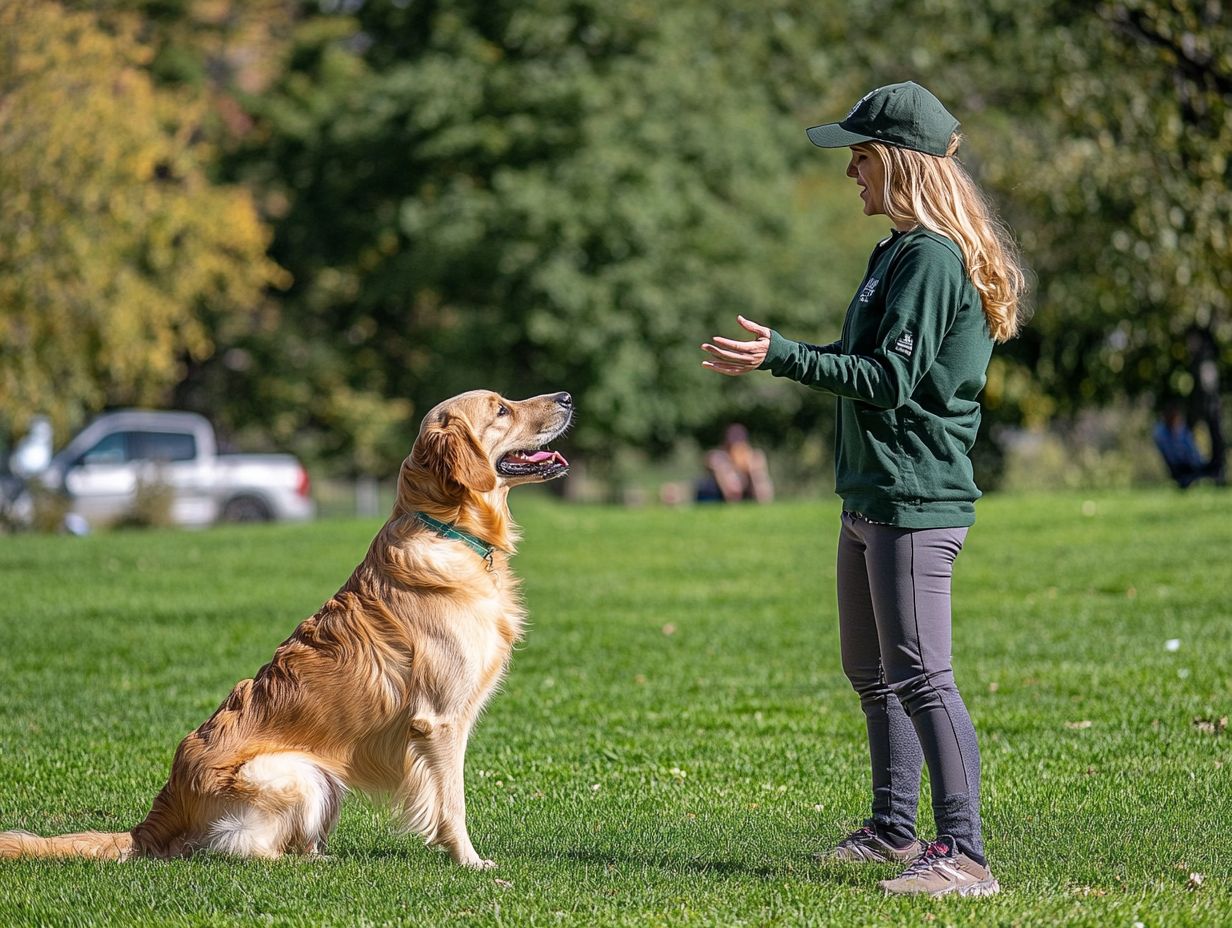
Positive reinforcement techniques are vital in dog training. They promote desired behaviors through rewards. This approach cultivates a constructive learning atmosphere that benefits both you and your canine companion.
By focusing on encouragement and rewards, you foster a stronger bond and enhance the overall training experience.
Using Rewards and Praise
Utilizing rewards and praise effectively is essential to the success of positive reinforcement. This helps cultivate desirable behaviors in your furry companion. Rewards can range from delicious treats to enthusiastic verbal affirmations or even toys that spark excitement and joy in your dog.
When training, provide rewards immediately after your dog exhibits the desired behavior. This makes the connection unmistakably clear. Consistency in delivering rewards significantly enhances the learning process. For example, if you consistently praise your dog for sitting on command, you’ll make it clear to them why good behavior is rewarding!
By incorporating these practices into your daily routines, you can turn training into an exciting game for both you and your dog. This leads to better compliance and a deeper bond between you.
Correcting Negative Behavior
Correcting negative behavior in dogs requires a careful approach to training. This method tackles behavioral issues while reinforcing positive training techniques.
This dual strategy is essential for cultivating better habits and ensuring a harmonious relationship between you and your canine companion.
Effective Discipline Strategies
Effective discipline strategies in dog training are essential for addressing behavioral issues. They also foster a deeper understanding of canine communication.
These strategies correct unwanted behaviors while enhancing the bond between you and your dog. For example, positive reinforcement motivates your dog to perform desirable actions like sitting or staying by rewarding them with treats, praise, or playtime. Time-outs can also discourage negative behaviors, such as jumping or excessive barking.
As a dog owner, finding the right balance between these methods is important. This ensures your training remains consistent and compassionate. Ultimately, this approach leads to a well-mannered and happy companion by your side.
Body Language and Tone of Voice
Understanding body language and tone of voice is essential for effective communication in dog training. These elements significantly impact canine behaviors and determine the overall success of your training efforts.
How to Communicate Effectively with Your Pet
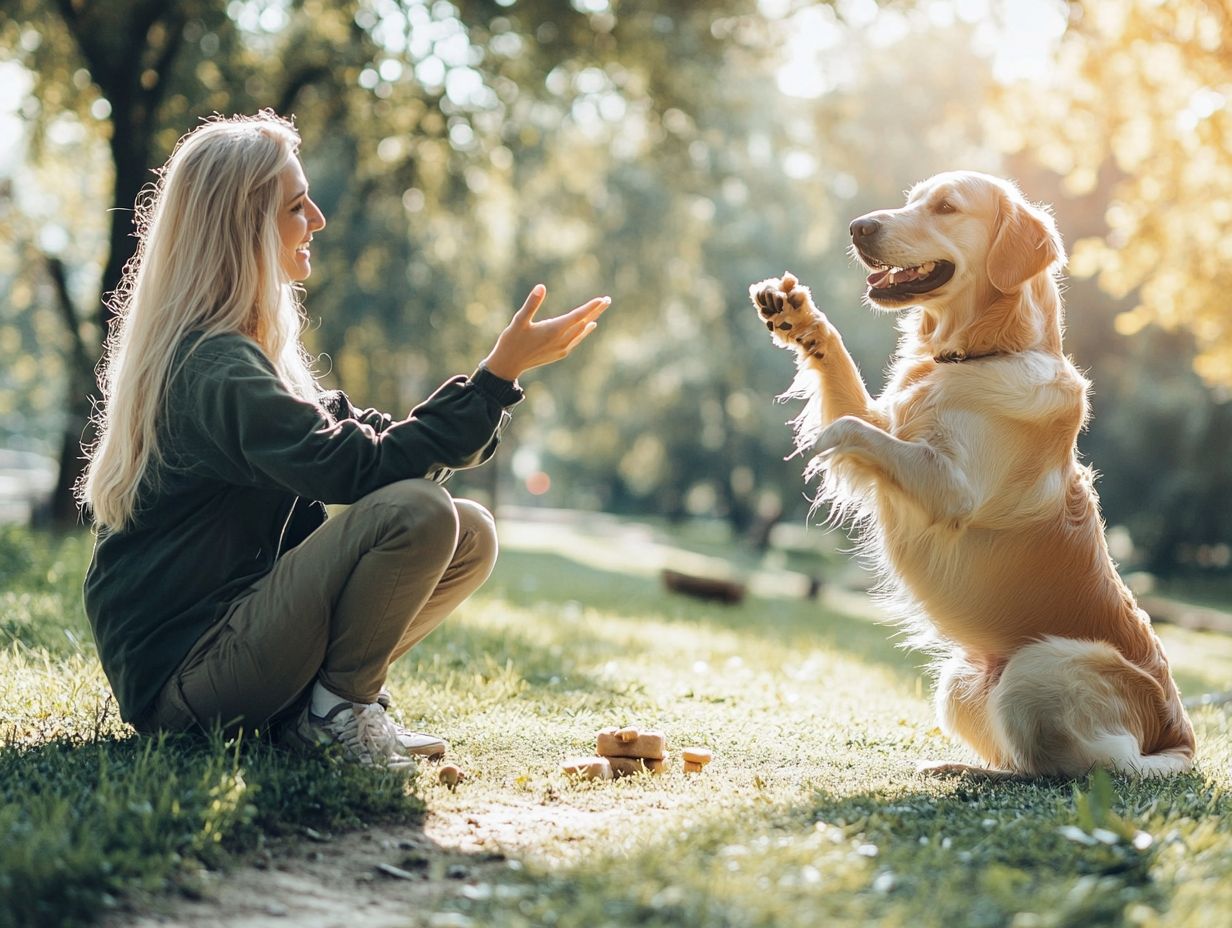
To communicate effectively with your pet, you must grasp the nuances of body language and tone of voice. Doing so can significantly elevate your training experience.
Observe how dogs respond to different cues to gain valuable insights into their feelings and intentions. For example, a wagging tail may indicate excitement, while cowering could signal fear.
Consistency in your commands and signals is crucial, as dogs thrive on predictability. By using the same gestures and words for identical behaviors, you ensure that your dog clearly understands your expectations. This ultimately leads to improved training outcomes and a deeper bond between you.
Engaging regularly in training sessions that reinforce this understanding will solidify these skills. This makes your communication more fluid and effective.
Communication Tips for Specific Training Goals
Grasping the nuances of communication tailored to specific training goals enables dog owners to customize their methods. This enhances the effectiveness of dog training and ensures it resonates with their pets’ unique needs.
Teaching Commands, Tricks, and House Rules
Teaching your dog commands, tricks, and house rules is essential for effective training. Strong communication is the key to achieving your goals.
When you establish a clear understanding with your dog, you create an environment where learning can flourish. Rewarding good behavior, like giving treats or praise, not only encourages the behaviors you want but also deepens the bond you share. For instance, when teaching a command like “sit,” pairing the verbal cue with a hand signal can help your dog make the connection. Consistency is essential. Setting clear house rules, such as no jumping on furniture or staying off the kitchen counter, helps cultivate clear expectations.
These practices lay a robust foundation for a well-mannered companion, allowing both you and your pet to thrive together in harmony.
Maintaining Good Communication with Your Pet
Maintaining strong communication with your pet is vital for achieving lasting success in dog training. Staying consistent will make your training journey exciting and effective!
This journey requires ongoing learning, allowing you to adapt to your dog’s ever-evolving needs.
Consistency and Continued Learning
Consistency and a commitment to continued learning are essential in dog training. These elements allow you to communicate effectively and adapt to your pet’s changing behaviors and needs.
Create a routine with clear commands to help your dog understand what you expect. Recognize that as your pet matures, your training techniques may require some fine-tuning.
Keep learning! Training programs and workshops can sharpen your skills and introduce you to new methods. This dedication to continuous improvement enriches the bond between you and your dog, ultimately fostering a more harmonious relationship built on trust and understanding.
Frequently Asked Questions
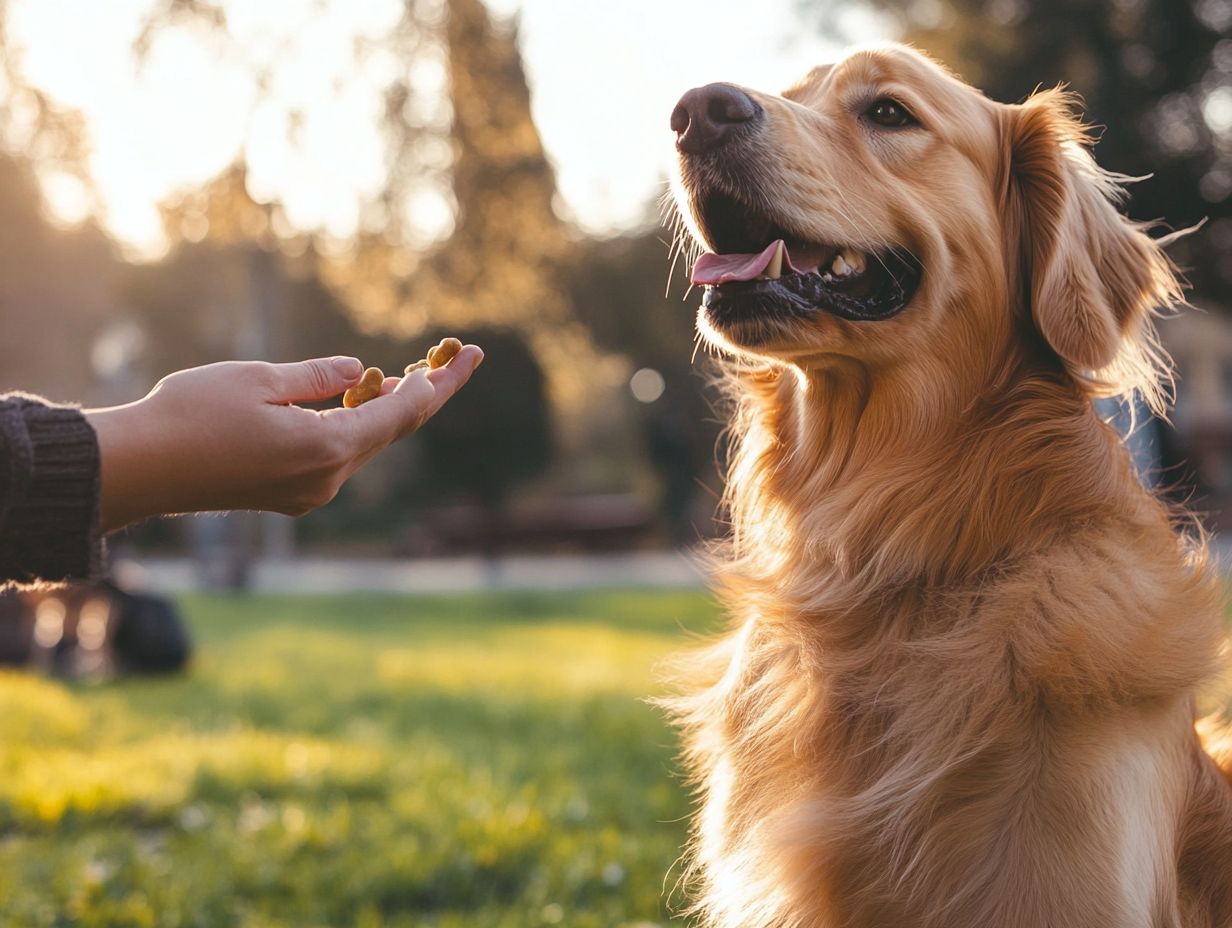
What are effective communication techniques in pet training?
Effective techniques include clear commands and rewarding good behavior.
Why is effective communication important in pet training?
It allows for clear understanding and consistent reinforcement of desired behaviors, leading to successful training.
What are some examples of effective communication techniques in pet training?
Examples include using positive reinforcement, establishing clear commands, and using body language to convey expectations.
How can I improve my communication with my pet during training?
Be patient and consistent. Use rewards and pay attention to your body language and tone.
What are some common mistakes to avoid when communicating with my pet during training?
Avoid using punishment, being inconsistent with commands, and lacking patience with your pet’s learning process.
Can effective communication techniques be used for all types of pets?
Yes, but techniques may vary based on the specific needs and behaviors of each pet.



